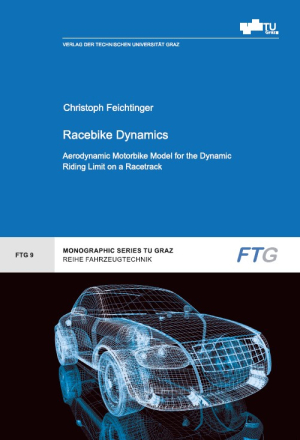When I started working at MotoGP Factory Racing Team in 2014, Aerodynamics was a relatively unexplored field. Therefore, an aerodynamic development process was built using state of the art tools like numerical flow simulations, wind tunnel tests and special on-track measurement equipment.
But although using all these state-of-the-art tools, it happens not rarely, that new developments were not showing the expected positive effect on the racetrack. The reasons for this were manifold: changing track conditions, varying rider and tire performance or different environmental conditions.
The bike aero tool was introduced to help engineers and athletes in the development of racebikes. A new approach for the assessment of aerodynamic racebike characteristics from real racetrack measurements was implemented – the so-called AIM approach, where AIM is the abbreviation for Aerodynamic, Inertia and Mass.
A new quantity chi was introduced as representation of the high dynamic of a racebike and rider system on a racetrack, where the rider plays an important role in terms of its riding style. The riding style has a huge impact on the center of gravity position of the overall racebike and rider system as well as on the aerodynamics of the overall racebike and rider system.
Aerodynamic Motorbike Model for the Dynamic Riding Limit on a Racetrack
Issue: Open Access E-Book
ISBN: 978-3-85125-861-5
Language: Englisch
Release date: January 2022
Series: Monographic Series TU Graz / Reihe Fahrzeugtechnik, Issue 9
When I started working at MotoGP Factory Racing Team in 2014, Aerodynamics was a relatively unexplored field. Therefore, an aerodynamic development process was built using state of the art tools like numerical flow simulations, wind tunnel tests and special on-track measurement equipment.
But although using all these state-of-the-art tools, it happens not rarely, that new developments were not showing the expected positive effect on the racetrack. The reasons for this were manifold: changing track conditions, varying rider and tire performance or different environmental conditions.
The bike aero tool was introduced to help engineers and athletes in the development of racebikes. A new approach for the assessment of aerodynamic racebike characteristics from real racetrack measurements was implemented – the so-called AIM approach, where AIM is the abbreviation for Aerodynamic, Inertia and Mass.
A new quantity chi was introduced as representation of the high dynamic of a racebike and rider system on a racetrack, where the rider plays an important role in terms of its riding style. The riding style has a huge impact on the center of gravity position of the overall racebike and rider system as well as on the aerodynamics of the overall racebike and rider system.






